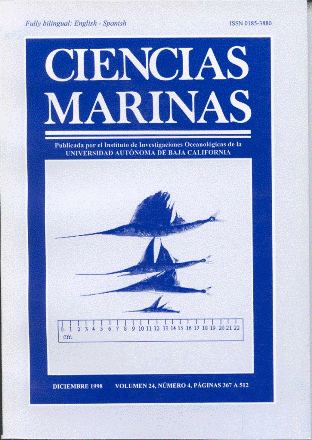The use of multivariate analysis to link sediment contamination and toxicity data to establish sediment quality guidelines an example in the Gulf of Cadiz (Spain)
Main Article Content
Abstract
To evaluate marine sediment quality in the Gulf of Cádiz, chemical concentration and toxicity test endpoints from sediments were linked using multivariate analysis. Sediment samples were collected synoptically at seven stations in two littoral ecosystems of the Gulf of Cádiz (five in the Bay of Cádiz and two in the salt marsh of the Barbate River), and subjected to six separate, replicated sediment toxicity tests and comprehensive sediment chemistry analyses. The toxic effects of sediments were tested using three operational sediment phases: whole sediment, using the estuarine amphipod Microdeutopus gyllotalpa (10 d static: survival) and the estuarine clam Ruditapes philippinarum (48 h static: reburial); sediment elutriates, using larvae of the estuarine bivalve Crassostrea ungulatu (48 h static: survival) and of the marine fish Sparus aurata (48 h static: survival); and interstitial water, using populations of the estuarine rotifer Brachionus plicatilis (7 d static: population decline) and of the marine bacteria Photobacterium phosphoreum (Microtox@). To evaluate the levels of contamination, the concentrations in the sediments of organic carbon, 14 trace metals (Fe, Mn, Cu, Zn, Pb, Cd, Ag, Hg, As, Sn, V, Ni, Co and Cr) and the surfactant linear alkylbenzenesulphonate (LAS) were measured. The results of the toxicity tests were compared in a dose-response relationship between sites, demonstrating a general agreement between the toxicity values determined by all the tests, except in the case of interstitial water toxicity (principally due to toxic mixtures of trace metals). Data derived from sediment chemistry and bioassays were assembled by multivariate statistical techniques (PCA and factor analysis), showing that the two data types could be represented by only five factors corresponding to five overlapping chemical-biological effect relations. Positive prevalence of these factors in the cases studied was used to establish those ranges in chemical concentrations associated with adverse effects. The sediment quality guidelines, in terms of concentrations at or below which biological effects have been shown to be minimal (mg kg–1 dry sediment), are: Hg, 0.25; Ag, 0.78; Pb, 66.80; Cr, 101.2; LAS, 2.6.
Downloads
Article Details
This is an open access article distributed under a Creative Commons Attribution 4.0 License, which allows you to share and adapt the work, as long as you give appropriate credit to the original author(s) and the source, provide a link to the Creative Commons license, and indicate if changes were made. Figures, tables and other elements in the article are included in the article’s CC BY 4.0 license, unless otherwise indicated. The journal title is protected by copyrights and not subject to this license. Full license deed can be viewed here.

